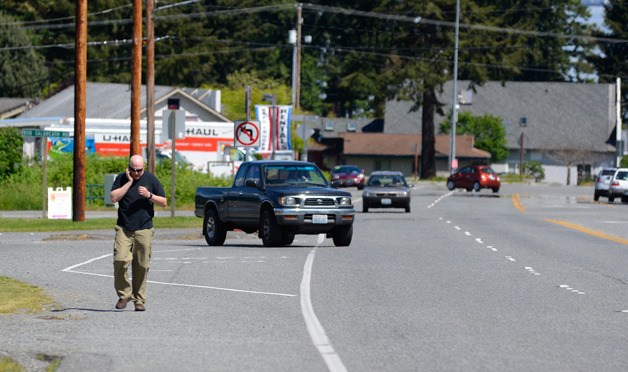Clinton may be the next beneficiary of a long-range county plan to build a paved trail that stretches the length of Whidbey Island.
Island County Public Works Director Bill Oakes confirmed plans to fund a $50,000 feasibility study later this year that will examine a proposed path from the Clinton Ferry Terminal to Ken’s Korner.
“The idea is to have a trail from the ferry to Langley Road,” Oaks said. “We certainly won’t be able to build it all at once, but that’s the idea.”
Island County has for years worked on a plan to construct a paved trail that snakes along Highway 525 and Highway 20, connecting the ferry terminal in Clinton to Deception Pass Bridge. The project is funding dependent, meaning segments are completed as money becomes available. So far, portions have been built in Coupeville —Rhododendron and Kettles trails — and work is progressing on a small stretch in Freeland from Fish to Cameron roads.
Oakes said the Clinton path will follow Highway 525, but could snake off in certain areas. The study will identify possible routes, easements needed, timelines, funding sources, and cost.
“In today’s dollars, the estimate is $2 million,” said Oakes, adding that most of that would be covered by state or federal grants.
The trail proposal has a wide base of support among elected and community leaders. Island County Commissioner Helen Price Johnson, a Clinton resident, said it was a priority identified during the Clinton Future Search Conference in 2012, and described the idea as “awesome.”
“I think the ability to enhance multi-modal accessibility is a good thing,” Price Johnson said. “It leads to a healthier lifestyle; it’s just good policy.”
Bob Craven, president of the Clinton Chamber of Commerce, said efforts are underway by community and public agencies to foster economic development in Clinton. Area leaders are working to slow the constant river of speedy ferry motorists and encourage pedestrian traffic while the Port of South Whidbey is endeavoring to improve off-island commuting by securing additional commuter parking in Mukilteo.
The goal behind both of these efforts is economic development, and improving access to and from the area complements that overlying objective, he said.
“I think the bicycle trail will be an integral part of that and help move this forward,” Craven said.
Oakes said a contract for the feasibility study would likely be approved this fall, but that construction would be at least four years away.



